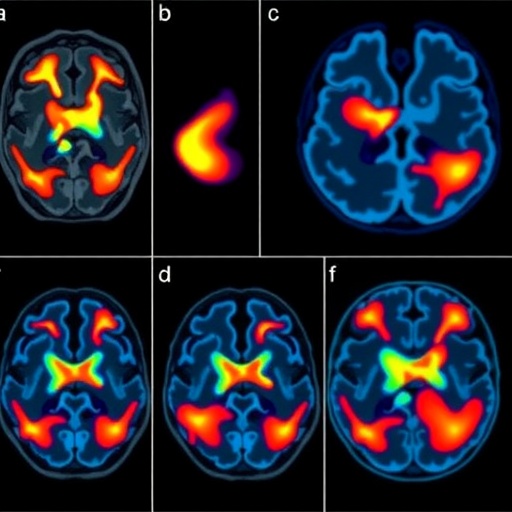In the ever-evolving landscape of environmental health research, the challenge of accurately measuring human exposure to complex chemical mixtures has long stymied scientists and policymakers alike. Among these pollutants, per- and polyfluoroalkyl substances (PFAS) hold a notorious reputation for their persistence, bioaccumulation, and potential health impacts. A newly published study in the Journal of Exposure Science and Environmental Epidemiology sheds critical light on the methods used to quantify aggregate PFAS exposure, evaluating and comparing advanced tools that could redefine how exposure assessments are conducted. This breakthrough research promises to propel forward the field of environmental epidemiology with methodological rigor and enhanced precision.
PFAS are synthetic chemicals widely used in industrial applications and consumer products due to their resistance to heat, water, and oil. However, their chemical stability, which makes them so industrially valuable, also renders them persistent environmental contaminants. These substances can accumulate in human bodies, creating a complex exposure profile that poses significant challenges in measurement. Traditionally, PFAS exposure has been assessed through the quantification of individual PFAS compounds, but this approach may underestimate total exposure due to the thousands of variants and their breakdown products.
The study authored by Klein, Liu, Braun, and colleagues systematically evaluates three prevailing methodologies to quantify aggregate PFAS exposure: Extractable Organic Fluorine (EOF), PFAS burden scores, and summed PFAS concentrations. Each approach has unique attributes and limitations for estimating total fluorine-based exposure, which is essential for accurately linking exposure levels to health outcomes in epidemiological studies. Accurate exposure quantification thus remains pivotal for effective regulatory and remedial actions addressing PFAS contamination.
Extractable Organic Fluorine (EOF) is a cutting-edge technique that quantifies the total fluorine content extractable from a biological or environmental sample. Unlike traditional methods that measure specified PFAS compounds, EOF captures both known and unknown organofluorine substances, including undocumented PFAS and transformation products. This method is proving essential for a holistic understanding of fluorine exposure, especially given the increasing identification of novel PFAS structures in various matrices.
PFAS burden scores represent a weighted composite measure, typically derived from the concentrations of specific PFAS analytes present in an individual’s blood or plasma samples. These scores account for different toxicological potencies and persistence among PFAS compounds. While burden scores provide an aggregate metric emphasizing compounds of higher concern, they may still overlook unmeasured or emerging substances, limiting their scope.
Summed PFAS concentrations entail the straightforward addition of detected individual PFAS compound concentrations within a sample. This approach is simple and transparent but may severely underestimate aggregate exposure by excluding unmeasured PFAS variants. Moreover, it assumes additive effects and equal relevance, which might not align with the nuanced toxicities of diverse PFAS species.
The comparative evaluation by the authors rigorously assessed the correlation, sensitivity, and practical applicability of these methodologies across diverse human cohorts and exposure scenarios. The study used comprehensive analytical platforms, including mass spectrometry coupled with fluorine detection and statistical modeling, to triangulate PFAS exposure estimates. Their analysis highlighted significant disparities among the methods in capturing total fluorine load and identified the contexts in which each is optimally suited.
Strikingly, the EOF method consistently revealed higher aggregate fluorine levels than summed PFAS concentrations, implying substantial missing fluorine hidden in uncharacterized PFAS compounds and fluorinated polymers. This finding stresses the imperative to integrate non-targeted analytical techniques in exposure science to avoid underestimation bias. The study also pointed out that burden scores—while useful—require continuous updating of compound weights as toxicological data evolves.
By addressing the gap left by conventional PFAS quantification, the novel EOF approach advances the capability to monitor complex fluorinated chemical mixtures with greater fidelity. In epidemiological terms, this translates into enhanced exposure metrics that can sharpen associations between PFAS exposure and adverse health endpoints such as endocrine disruption, immune modulation, and carcinogenesis. Such progress in exposure science is critical given the widespread distribution and persistence of PFAS in human populations globally.
The study further advocates for methodological harmonization across research and regulatory frameworks to ensure consistent and comparable PFAS exposure data. Cross-study comparability remains essential for meta-analyses and risk assessments that underpin public health guidelines. The authors emphasize that integrating EOF measurements with compound-specific analyses offers a comprehensive exposure profile while retaining mechanistic insight.
However, challenges regarding the accessibility, cost, and standardization of EOF methodologies persist. Instrumentation for accurate fluorine detection and extraction demands significant infrastructural investments. Furthermore, inter-laboratory validation and development of standardized protocols are necessary to translate these advanced methods from research settings to routine biomonitoring efforts.
Emerging from this research is a roadmap for future studies aiming to unravel the nuanced health impacts of PFAS exposure. High-resolution exposure assessment methodologies like EOF, combined with robust epidemiological designs, can enable risk modeling that captures the cumulative and potentially synergistic effects of the diverse PFAS universe. This represents a strategic pivot towards precision environmental health, where exposure assessment transcends measured analytes to embrace the totality of chemical burden.
The implications of this study extend beyond academia, signaling urgent considerations for regulatory agencies engaged in setting safety standards and exposure limits. Current regulatory frameworks often hinge on a narrow set of target PFAS compounds, risking underprotection due to incomplete exposure quantification. Integrative approaches that consider aggregate fluorine may guide the establishment of more comprehensive and protective policies.
Public health advocates and affected communities stand to benefit significantly from the enhanced clarity brought by this research. More accurate exposure measurements provide stronger evidence bases for litigation, remediation efforts, and health interventions. Moreover, as environmental justice perspectives gain traction, precise exposure data are critical for identifying and mitigating PFAS disparities across populations.
To catalyze this shift, the study calls for interdisciplinary collaborations linking analytical chemists, toxicologists, epidemiologists, and policymakers. Such concerted efforts are vital to develop validated, accessible, and interpretable exposure metrics that can inform science-driven policies and interventions addressing the PFAS crisis. The authors highlight that embracing advanced metrics like EOF will be foundational in this endeavor.
Ultimately, this pioneering evaluation of PFAS exposure quantification tools signals a new era of environmental exposure science. Through meticulous comparison and validation, it points the way to more robust and holistic assessments capable of underpinning the urgent public health response required to confront PFAS contamination. As the scientific community mobilizes resources and innovation, the promise of safer chemical landscapes grows.
While challenges remain to operationalize these advanced methodologies broadly, the potential benefits underscore their importance in shaping the future of environmental health monitoring. The insights gained from this comparative study confirm that reliance on summed concentrations alone is insufficient and that embracing total organofluorine approaches offers a transformative leap toward understanding and managing PFAS risks more effectively.
As the global scientific community grapples with the pervasive legacy of fluorinated chemicals, tools that can better capture the unseen chemical burden become indispensable. This landmark study not only enriches our methodological toolkit but also reaffirms the critical need for continuous innovation driving evidence-based action in environmental and public health domains.
Subject of Research:
Evaluation and comparison of analytical tools to quantify aggregate human exposure to per- and polyfluoroalkyl substances (PFAS) using extractable organic fluorine, PFAS burden scores, and summed PFAS concentrations.
Article Title:
Evaluation and comparison of tools used to quantify aggregate PFAS exposure: Extractable organic fluorine, PFAS burden scores and summed PFAS concentrations.
Article References:
Klein, R.A., Liu, S.H., Braun, J.M. et al. Evaluation and comparison of tools used to quantify aggregate PFAS exposure: Extractable organic fluorine, PFAS burden scores and summed PFAS concentrations. J Expo Sci Environ Epidemiol (2025). https://doi.org/10.1038/s41370-025-00806-x
Image Credits: AI Generated
DOI: https://doi.org/10.1038/s41370-025-00806-x
Tags: advanced tools for exposure assessmentaggregate PFAS exposure measurementbioaccumulation of PFASchallenges of measuring chemical mixturesenvironmental epidemiology methodologiesenvironmental health research on PFASexposure assessment advancements in researchmethods for quantifying PFAS exposureper- and polyfluoroalkyl substancespersistence of environmental contaminantsPFAS health impacts and riskssynthetic chemicals in consumer products





